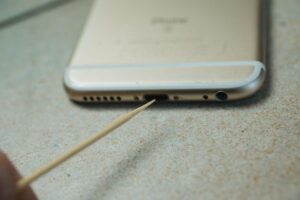Are you dealing with flashlight battery corrosion and wondering how to clean it? Well, you’re in the right place! Battery corrosion can be a frustrating issue that affects the performance and lifespan of your flashlight. But fear not, because in this article, we’ll walk you through the simple steps to effectively clean flashlight battery corrosion. Say goodbye to dim, unreliable flashlights and hello to a bright, fully operational tool. Let’s dive right in and learn how to clean flashlight battery corrosion so you can enjoy a reliable and long-lasting light source.
How to Clean Flashlight Battery Corrosion: A Comprehensive Guide
Have you ever reached for your trusty flashlight in an emergency, only to find that it’s not working? One common culprit for flashlight failure is battery corrosion. The build-up of corrosive material on the battery terminals can prevent the flow of electricity, rendering your flashlight useless. But fear not! In this article, we will explore step-by-step how to clean flashlight battery corrosion and get your flashlight back in working order. From identifying corrosion to using household items for cleaning, we’ve got you covered. Let’s dive in!
Section 1: Identifying Flashlight Battery Corrosion
Before we jump into the cleaning process, it’s important to know how to identify flashlight battery corrosion. Here are some telltale signs:
1. Dim or no light: If your flashlight shows little to no illumination, it could be due to battery corrosion.
2. Foul smell: Battery corrosion often produces a distinct sulfur-like smell. If you notice an unpleasant odor near your flashlight, corrosion may be the cause.
3. Discoloration: Look for any signs of rust or greenish/blueish substance on the battery terminals. This can indicate corrosion.
How Corrosion Occurs
Battery corrosion occurs when the chemicals inside the battery react with each other, resulting in the formation of corrosive material. Factors that contribute to corrosion include:
– Old batteries: As batteries age, they become more susceptible to leaking and corrosion.
– Moisture: Exposure to moisture or high humidity can accelerate the corrosion process.
– Battery types: Certain battery chemistries, such as alkaline or zinc-carbon batteries, are more prone to corrosion compared to others.
Section 2: Gathering the Necessary Tools
Now that you know how to identify flashlight battery corrosion, let’s gather the tools needed to clean it effectively. Fortunately, you don’t need any specialized equipment. Most of these items can be found in your household:
1. Gloves: To protect your hands from any corrosive substances, wear a pair of disposable gloves.
2. Safety glasses: Eye protection is crucial when working with potentially corrosive materials. Wear safety glasses to shield your eyes.
3. Cotton swabs or soft cloth: These will be useful for applying the cleaning solution and removing corrosion.
4. Baking soda: You’ll need baking soda to create a homemade cleaning solution. It’s an effective and gentle abrasive that helps remove corrosion.
5. Water: You’ll need water to mix with the baking soda and rinse the flashlight afterward.
6. Toothbrush: A soft-bristled toothbrush can be handy for scrubbing away stubborn corrosion.
Section 3: Cleaning Flashlight Battery Corrosion
Now it’s time to roll up your sleeves and clean the flashlight battery corrosion. Follow these step-by-step instructions to ensure the best results:
1. Safety precautions: Before starting the cleaning process, put on your gloves and safety glasses to protect yourself from any potential harm.
2. Remove the batteries: Open your flashlight’s battery compartment and remove the batteries. If the corrosion is severe, gently tap the flashlight on a hard surface to dislodge any loose debris.
3. Mixing the cleaning solution: In a small container, mix a tablespoon of baking soda with a few drops of water to create a paste-like consistency. Stir well until the baking soda dissolves.
4. Applying the cleaning solution: Dip a cotton swab or soft cloth into the baking soda paste. Apply the paste directly onto the corroded areas of the battery compartment and terminals. Ensure thorough coverage.
5. Let it sit: Allow the baking soda paste to sit on the corroded areas for about 5-10 minutes. This will give it time to break down the corrosion.
6. Scrubbing and removing corrosion: After the paste has had time to work, gently scrub the corroded areas with a soft-bristled toothbrush. Apply light pressure and make small circular motions. Continue until the corrosion is loosened and removed.
7. Wiping off the paste: Dampen a clean cloth or paper towel with water and use it to wipe away the baking soda paste and any remaining corrosion. Ensure all traces of the paste and corrosion are removed.
8. Drying and reassembly: Use a dry cloth or paper towel to dry the battery compartment and terminals thoroughly. Once dry, reinsert the batteries into the flashlight, ensuring they are correctly aligned.
Section 4: Preventative Measures
Now that you’ve successfully cleaned the flashlight battery corrosion, it’s essential to take preventive measures to avoid future corrosion. Here are some tips:
1. Remove batteries when not in use: If you won’t be using your flashlight for an extended period, remove the batteries to eliminate the risk of corrosion.
2. Store batteries properly: Store batteries in a cool, dry location away from moisture. Consider using a battery organizer or case to keep them protected.
3. Inspect batteries regularly: Regularly check your flashlight’s batteries for signs of leakage or corrosion. Promptly replace any batteries showing signs of deterioration.
4. Clean flashlight regularly: Even if you don’t notice corrosion, it’s a good practice to clean your flashlight periodically. This helps prevent build-up and ensures optimal performance.
5. Consider alternative battery chemistries: If your flashlight allows, consider using rechargeable batteries or lithium batteries, as they are less prone to corrosion compared to alkaline batteries.
Section 5: Testing Your Flashlight
After cleaning the flashlight battery corrosion, it’s time to put your flashlight to the test. Follow these steps to ensure everything is in working order:
1. Fully reassemble the flashlight: Make sure the batteries are correctly inserted and securely placed in the battery compartment.
2. Turn on the flashlight: Switch on your flashlight and check if it illuminates properly. Verify that the brightness is consistent and there are no flickering or intermittent lighting issues.
3. Check the battery life: Monitor the battery life to ensure that it matches the expected runtime for your flashlight. If you notice a significant difference or decreased performance, consider replacing the batteries.
4. Perform a functionality test: Test any additional features or modes your flashlight may have, such as strobe or SOS modes, to ensure they are functioning correctly.
If your flashlight does not work properly or continues to exhibit signs of corrosion after cleaning, it may be time to consult a professional or consider replacing the flashlight altogether.
In conclusion, knowing how to clean flashlight battery corrosion is an essential skill for any flashlight owner. By following the detailed steps outlined in this guide and taking preventive measures, you can prolong the lifespan of your flashlight and ensure it is always ready for use when you need it most. Remember the importance of safety precautions, gather the necessary tools, and be thorough in the cleaning process. With this knowledge, you can confidently tackle any flashlight battery corrosion issues that may arise.
Frequently Asked Questions
How do I clean flashlight battery corrosion?
To clean flashlight battery corrosion, follow these steps:
What materials do I need to clean flashlight battery corrosion?
To clean flashlight battery corrosion, you will need:
Can I clean flashlight battery corrosion with household items?
Yes, you can clean flashlight battery corrosion with household items. One commonly used method involves:
How often should I clean flashlight battery corrosion?
It is recommended to clean flashlight battery corrosion as soon as you notice it. Regularly check and clean the battery compartment to prevent future corrosion.
What precautions should I take when cleaning battery corrosion?
When cleaning battery corrosion, always remember to:
Can I prevent future battery corrosion in my flashlight?
Yes, you can take steps to prevent future battery corrosion in your flashlight by:
Final Thoughts
To clean flashlight battery corrosion, start by removing the batteries from the flashlight. Wearing gloves, use a small brush, like a toothbrush, to scrub away the corrosion using a mixture of water and baking soda. Make sure to clean both the battery terminals and the contacts inside the flashlight. Once done, rinse the components with clean water and dry them thoroughly. Before inserting new batteries, apply a small amount of petroleum jelly to the terminals to prevent future corrosion. Regularly cleaning and maintaining your flashlight will ensure optimal performance and prevent battery corrosion.



